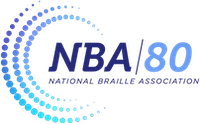Good day, great tg thinkers! We at APH are working on a series of path-following activities for burgeoning tactile graphic users, and we are discussing the pros and cons of solid lines vs. dashed (or dotted) lines for those paths.
What are your thoughts on solid lines and dashed lines for early learners?
And, do GSTG2022 sections 11.2.1, 11.2.3, and 11.2.5 affect your thinking about this issue?
Thank you!
–Kyle DeJute
P.S. In the hope that it is convenient, below I have copied the text of the sections referenced above.
- 11.2.1 Graphics for young readers should be produced using uncomplicated area textures and clean strong lines. Solid shapes are more easily recognized than are outline shapes.
- 11.2.3 For readers in kindergarten through grade 3, images should be shown as simple tactile shapes. Do not represent objects using braille dot graphics.
Examples: Do not use full cells to represent bars in a bar graph. Do not use single letters to represent objects that are to be counted or grouped, such as “b” for each butterfly to be counted.
- 11.2.5 In materials for readers in grade 4 and above, a tactile graphic is preferred, but braille dot graphics may be used, including full cells and shape indicators.
